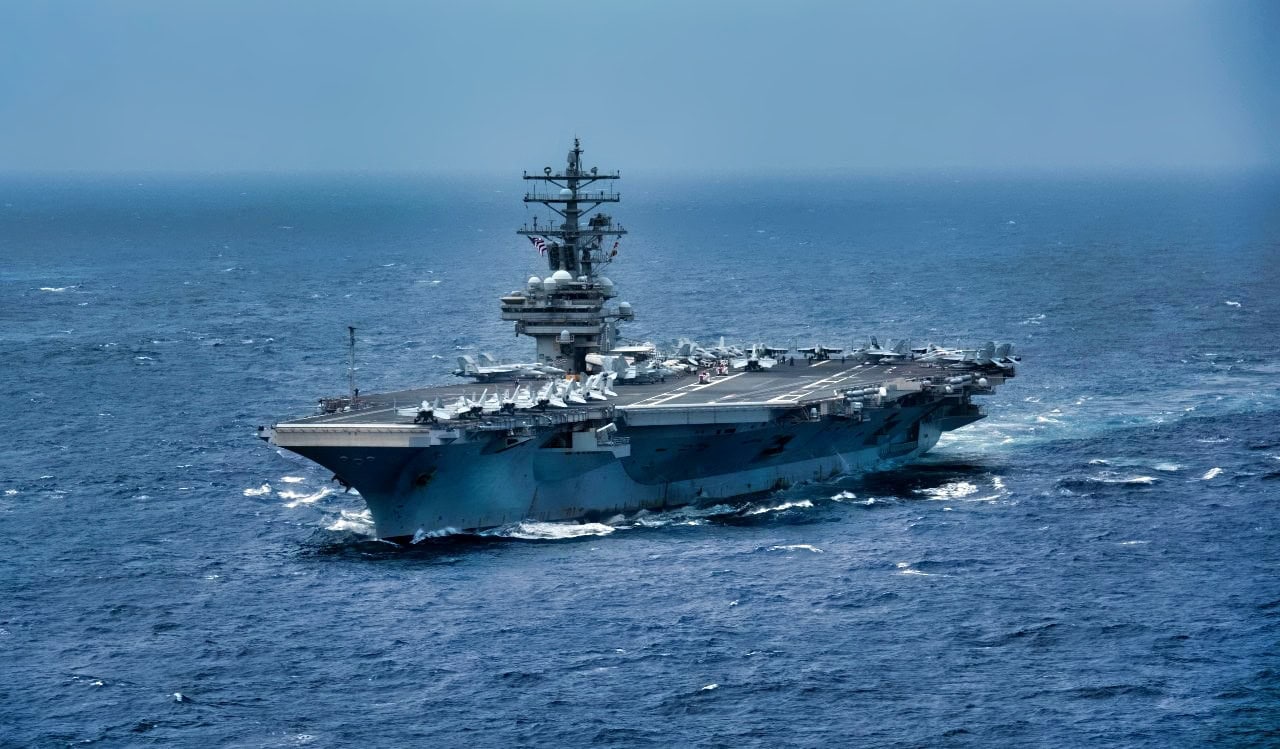With no reliable defense against hypersonic missiles, the future of supercarriers in high-intensity conflicts, particularly in the Indo-Pacific, is under scrutiny.
The aircraft carrier has been the quintessential US power projection icon for over 80 years.
It replaced the battleship during World War II as the ultimate power at sea.
For the first time in the history of naval warfare, opposing navies would fight an enemy fleet they never saw.
The battleship was rendered obsolete by carriers that could launch wave after wave of torpedo bombers, dive bombers, and fighters to protect them from enemy aircraft. However, the age of aircraft carriers may be coming to an end.
The aircraft carrier, the biggest power projection icon for naval dominance, is also the biggest target on the sea.
Anti-ship and hypersonic missiles are very difficult to defend against. Diesel submarines operating quietly under the surface can launch a spread of torpedoes inside the carrier’s protective zone; it has already happened.
Drones in the air and in the sea have opened another factor to contend with. A couple of hits from a drone would sink or disable a $13 billion aircraft carrier, the cost of the new Ford-class US Navy carriers.
While the United States still uses its carriers to project power worldwide, carriers may not last in a war with China or Russia where these new vectors exist.
Ford and Eisenhower Carrier Groups Deploy to the Middle East
The USS Gerald Ford (CVN-78) carrier group was sent to the Eastern Mediterranean in the Middle East after the October 7 attack by Hamas on Israel. The Ford didn’t intercept any missiles or drones during its deployment, but the “floating airbase” launched over 8,000 sorties against targets while collecting intelligence.
At the same time, the USS Dwight D. Eisenhower carrier group was sent to the other side of Israel, in the Gulf of Aden at the mouth of the Red Sea. The Iranian-backed proxy group, the Houthis, in support of Hamas and Iran, continued to attack commercial shipping.
While on deployment there, the Eisenhower group responded to a distress call from the M/V Maersk Hangzhou, which was under attack by four small Houthi gunboats.
Scrambled helicopters from the Eisenhower and the destroyer USS Gravely came under fire when they approached the container ship. The choppers returned fire, sinking three of the four Houthi gunboats and killing their crews.
The Houthis have anti-ship missiles that were supplied by Iran, which they’ve continued launching at commercial shipping and US naval vessels.
Critics of the supercarriers point to the extreme price tag of $13 billion and vulnerability to emerging missile threats in a smaller setting, such as in the Gulf of Aden, showcasing how the whole “supercarrier” concept is no longer sustainable.
The Hypersonic Missile Threat to Aircraft Carriers
Critics of the new supercarriers point to the cost of the new Ford-class carriers, $13 billion each with a total cost of $120 billion of the program.
That is an enormous investment; the Ford-class carriers are the most expensive ships ever built.
Should the US continue building carriers? Russia and China have hypersonic missiles that can severely damage or sink a supercarrier. The Navy currently has 11 carriers, the most in the world.
The US doesn’t have a missile defense system that can counter hypersonic missiles that travel at five times the speed of sound.
The hypersonic missile is a potential weapon that can revolutionize warfare. By launching a first-strike weapon at an adversary, it shortens the reaction time of the defender, basically crippling its defensive posture.
China is far ahead of the US in hypersonic technology.
Are the Aircraft Carriers Worth the Cost?
As much airpower as carriers carry and project, they are now vulnerable to hypersonic missile attacks, drone attacks from the air and under the sea, and submarine launches.
As was highlighted above, during an exercise in 2005, a Swedish submarine—the HMSM Gotland, sunk the USS Ronald Reagan.
The low-tech diesel submarine was able to sneak past the Ronald Reagan’s passive sonar defenses, land multiple virtual torpedo hits, sink the carrier, and leave without a scratch.
The Navy is working on defenses for the hypersonic missile threat. But the carriers are highly vulnerable until they can field an active defense. And if a carrier is hit, what happens to the 90 or more aircraft on board?
The Ford-class carriers have a complement of 90-plus aircraft on board, including the Boeing F/A-18E/F Super Hornet, Boeing EA-18G Growler, Grumman C-2 Greyhound, Northrop Grumman E-2 Hawkeye, Lockheed Martin F-35C Lightning II, Sikorsky SH-60 Seahawk helicopters, and unmanned combat aerial vehicles. The same aircraft that bring so much air power projection can’t do much if their “mobile airfield” is sunk.
Carriers remain incredible power projection icons in the Middle East, where they’ve been highly effective. However, they are too vulnerable to continue building any more of them in a shooting war in the Indo-Pacific.
No More Supercarriers…
The Navy should not build any more aircraft carriers. It is hard to justify $13 billion for a carrier when they have 11.
The age of the aircraft carrier isn’t over yet, but it is nearing.
About the Author
Steve Balestrieri is a 19FortyFive National Security Columnist. He served as a US Army Special Forces NCO and Warrant Officer. In addition to writing for 19FortyFive, he covers the NFL for PatsFans.com and is a member of the Pro Football Writers of America (PFWA). His work was regularly featured in other military publications.

